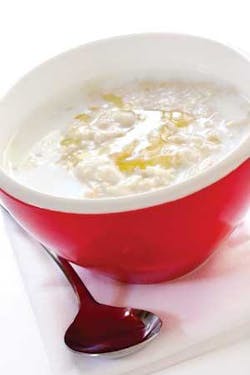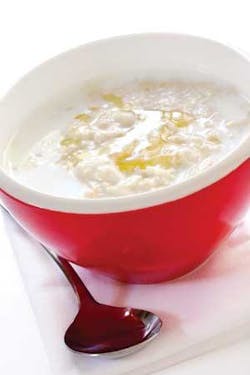Selling to dental professionals: The Technology Quotient™
By Edward F. Rossomando, DDS, PhD, MS
In the fairy tale “Goldilocks and the Three Bears,” Goldilocks is presented with three bowls of porridge and, after sampling the merchandise, she opts for the one that is “just right.” Selling to dental professionals, dentists, dental hygienists, dental assistants, and office managers is, in many ways, akin to selling to Goldilocks. There is the merchandise (the porridge), a customer (Ms. Locks), and the sales presentation (the bowls of porridge). Not sure of Ms. Locks’ preference in porridge, she is presented with three choices and Ms. Locks selects the one that is “just right.” This fairy tale illustrates the three elements to any sales transaction — the merchandise, the customer, and the format of the sales presentation.
Of the three elements, merchandise can be subdivided. One subdivision would classify merchandise as either a service, a technology, equipment, or a product. Another subdivision would classify the merchandise as either revolutionary or evolutionary. Merchandise in the evolutionary category is usually an easier sell because the customer understands that the merchandise is an extension of something familiar. If the new merchandise is only a newer version of the existing merchandise line — one that makes completing of the task faster, quicker, and cheaper — it is clearly an improvement and easier to sell. Selling revolutionary merchandise is more difficult. To introduce revolutionary merchandise requires displacing familiar merchandise that is already in the office. The lack of familiarity of this revolutionary merchandise means that its introduction into the workflow requires time — time for training of office personnel in how to handle the new merchandise, time to determine its outcome, and time to evaluate patient acceptance. Of course, all this time costs money and these costs can be a barrier to entry of revolutionary merchandise.
While most merchandise can be categorized as described above, categorizing the customer is more complex. A large part of what we know about customers comes from the studies of Everett Rogers and is presented in detail in his book “Diffusion of Innovations” (Rogers EM. “Diffusion of Innovations,” 5th edition, Free Press, New York, 1995, p. 281). Rogers groups customers into one of five categories: innovators (2.5%), early adopters (13.5%), early majority (34%), late majority (34%), and laggards (16%). The fraction of a customer population in each group is given by the number in parentheses. Graphing these values presents the groups in a normal distribution — a bell curve — with the innovators and early adopters on the left end of the bell curve, together accounting for 16% of the customers, and the laggards on the right end, another 16% of the customers. In the middle are early and late majorities, together accounting for 68% of the customers. Extrapolating this analysis and these percentages to the approximately 150,000 dentists in the U.S. suggests there will be no more than about 24,000 dentists who might be innovators/early adopters, about 102,000 who might be in the majority, and about 24,000 dentists who might be laggards. Because Rogers characterizes innovators/early adopters as risk takers, the 24,000 customers who are innovators/early adopters are an important metric when we are trying to sell revolutionary merchandise. On the other hand, when selling evolutionary merchandise — whether an improvement to an existing service, technology, equipment, or product — Rogers’ classification suggests we might expect to sell to about 100,000 customers. Ms. Locks’ selection of the “just right” porridge suggests she is not a risk taker — she would not take a chance on the porridge that was too hot or too cold — she is one of the 68% in the majority.
Clearly categorizing a customer would be beneficial to a salesperson. Knowledge of which customers are innovators and early adopters, which are in the majority, and which are laggards would be of value. To categorize the approximately 150,000 dentists in the U.S., the Center for Research and Education in Technology Evaluation (CRETE) developed a questionnaire that would evaluate each dentist’s awareness and knowledge of merchandise. From the results of the questionnaire, a Technology Quotient™ (TQ) is calculated for each dentist and used to place the dentist into one of Rogers’ categories. To enhance the value of the TQ determination, questionnaires for members of each group of dental professionals — dentists, hygienists, and dental assistants — are generated. To enhance the value of the TQ further, there is an additional refinement. As mentioned above, merchandise can be subdivided into services, technologies, equipment, and products. It is to be expected that knowledge and awareness of merchandise in each subdivision will vary. For example, the hygienist might be knowledgeable about products used for whitening of teeth but less knowledgeable about equipment such as lasers. On the other hand, the dentist might have more knowledge of lasers. Clearly a TQ questionnaire for all merchandise would not be appropriate. To overcome this difficulty, and to generate a more meaningful categorization, a TQ questionnaire specific for different types of merchandise, services, technologies, equipment, and products is generated. With questionnaires that are merchandise-specific, a TQ can be calculated that categorizes a specific dental professional’s knowledge of a specific category of merchandise.
From the fairy tale, it appears Papa Bear had no market research to guide him when selling the porridge to Ms. Locks. He did not know if she was an innovator/early adopter, in the majority, or a laggard. In the absence of this information, he did what any good salesperson would do — he presented a choice — the three bowls of porridge. While choice can be a default position in any sales transaction, how much more cost-effective might the sale be if he knew Ms. Locks’ porridge TQ. If he knew Ms. Locks was neither an early adopter nor a laggard but in the majority, he could have offered only the “just right” bowl of porridge and saved his company the cost of the porridge in the other two bowls (representing two thirds of the sales call costs) as well as costs for set up and clean up of the bowls and spoons. And, he certainly would not try to sell Ms. Locks a revolutionary new breakfast cereal.
To find out how your company can develop questionnaires to evaluate the TQ™ of your customers and your specific merchandise, please contact Edward F. Rossomando at [email protected].

